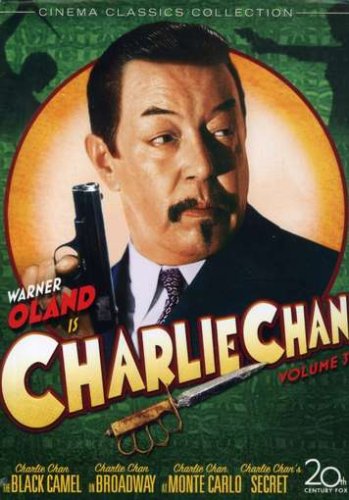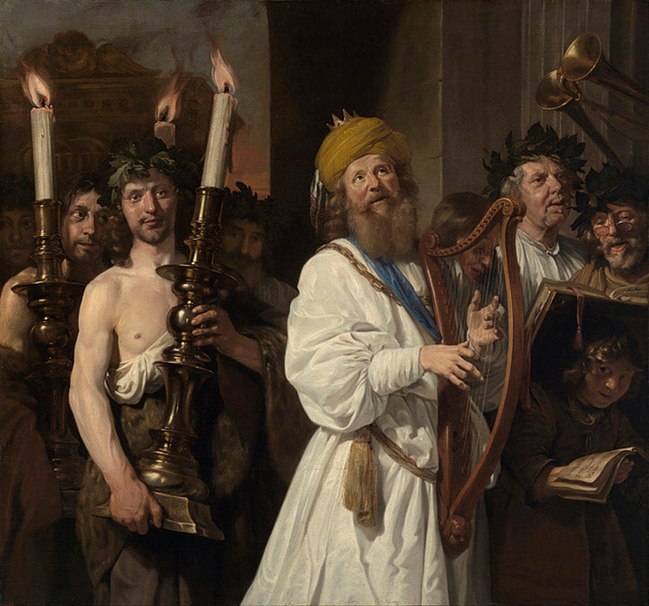
* * * *
 I recently became enamored of the name “Leah.”
I recently became enamored of the name “Leah.”
I knew there was a Leah mentioned in the Bible, but couldn’t remember exactly who she was. (Or more precisely, whose wife she was.) And how she and her sister Rachel both ended up marrying the same man, and in turn “giving birth” to eight of the 12 Tribes of Israel.
And finally, how one of her “great, great, great” (etc.) grandsons was one Jesus of Nazareth.
For the full story, see the Wikipedia article on Leah:
She and her younger sister Rachel became the two concurrent wives of Hebrew patriarch Jacob. She had six sons, whose descendants became [six] of the Twelve Tribes of Israel. She also had a daughter, Dinah.
But how she ended up married to Jacob involved a bit of trickeration. (Described in Genesis 29.)
 Basically, his mother Rebecca sent Jacob to his uncle Laban’s. She did that so Jacob wouldn’t get killed by his brother Esau. (In an earlier bit of trickeration, Jacob bamboozled Esau out of his birthright – that is, his favored status as first-born son – and as shown at right.)
Basically, his mother Rebecca sent Jacob to his uncle Laban’s. She did that so Jacob wouldn’t get killed by his brother Esau. (In an earlier bit of trickeration, Jacob bamboozled Esau out of his birthright – that is, his favored status as first-born son – and as shown at right.)
So anyway, Uncle Laban had two daughters, the beautiful Rachel and her older daughter Leah. Jacob fell in love with Rachel, and in the fullness of time worked seven years for Laban. (In exchange for Rachel’s “hand.”) But on the wedding night, Laban pulled the old switcheroo:
Laban brought together all the people … and gave a feast. But when evening came, he took his daughter Leah and brought her to Jacob, and Jacob made love to her… When morning came, there was Leah! So Jacob said to Laban, “What is this you have done to me? I served you for Rachel, didn’t I? Why have you deceived me?” Laban replied, “It is not our custom here to give the younger daughter in marriage before the older one. Finish this daughter’s bridal week; then we will give you the younger one also, in return for another seven years…”
That’s from Genesis 29:22-28 (NIV). And incidentally, Jacob also ended up having sons by both of Rachel’s and Leah’s handmaids. (They were named Bilhah and Zilpah.) First, Rachel gave Bilhah to Jacob because she – Rachel – was barren; she couldn’t have children. Then – when Leah stopped conceiving after bearing Jacob four sons – she gave her handmaid to Jacob.
 So, just to keep things straight: Zilpah and Bilhah both bore two sons to Jacob. Rachel also bore two sons for Jacob. But the “winner” clearly was Leah, who gave Jacob six sons. (Or, to borrow a phrase from O Brother, Where Art Thou, Leah might well have said, “Ohhhh mercy! Yes, I got to beat that competition!”) And as noted, those 12 sons eventually became the 12 Tribes of Israel.
So, just to keep things straight: Zilpah and Bilhah both bore two sons to Jacob. Rachel also bore two sons for Jacob. But the “winner” clearly was Leah, who gave Jacob six sons. (Or, to borrow a phrase from O Brother, Where Art Thou, Leah might well have said, “Ohhhh mercy! Yes, I got to beat that competition!”) And as noted, those 12 sons eventually became the 12 Tribes of Israel.
Also incidentally, Bilhah later committed adultery with Reuben – Jacob’s “eldest son with Leah” – and as described in Genesis 35:22: “While he was living there [‘beyond the tower of Eder’], Reuben had intercourse with Bilhah, his father’s concubine, and Jacob soon heard about it.”
But that’s a whole ‘ nother story.
For another take on Leah’s story, see the Jewish Women’s Archive. It tells the further story of these two “co-wives in competition for status in the household.” It also tells of Rueben – noted above – finding mandrakes for the two women. (They were known in the Bible as “love apples,” and were similar to today’s Viagra.) That’s as described in Genesis 30, and which “mandrakes” led to both Leah and Rachel each bearing two more sons for Jacob.
More to the point of this post, see Leah in the Bible Was an Early Ancestor of Jesus Christ: “Leah in the Bible is a person many can identify with.” Or as it says in Matthew 1:2 – part of his Genealogy of Jesus – “Jacob was the father of Judah and his brothers.” And Leah was the mother of Judah, and also of five of the other 12 brothers who became the Tribes of Israel.
Thus as noted in Ruth 4:11: “May the LORD make the woman who is coming into your home [Ruth] like Rachel and Leah, who together built up the family of Israel.” Which means that there’s probably some kind of object lesson in all of this “spirited competition…”
* * * *
And finally, it should be noted that June 29 was the Feast of Saints Peter and Paul. It honors “the martyrdom in Rome of the apostles Saint Peter and Saint Paul.” (Seen below, and as noted in last year’s On Peter, Paul – and other “relics.”) That post had this point to make (on competition):
Some Christians seem to think they have to be all “nicey-nicey,” all the &%#$ time, with each other and with non-Christians. But the Feast of Peter and Paul goes to show it’s okay to have differences of opinion, or even “squabble” from time to time. {E.A.]
* * * *

“Saints Peter and Paul,” by El Greco…
* * * *
The upper image is courtesy of Janette’s Sage: Leah verus Rachaeljanettessage.blogspot.com.
The image to the left of the first main paragraph is courtesy of Israelites – Wikipedia. The caption: “Mosaic of the 12 Tribes of Israel, from a synagogue wall in Jerusalem.”
“Note” also that an asterisk in the main text indicates a statement supported by a reference detailed further in this “notes” section. Thus as to Luke 24:45 – “Then he opened their minds” – see the Intro. (Among other things, as to the possibility of expanding your mind.)
The image of Jacob and Esau is courtesy of the Wikipedia article on Esau. The caption: “‘Esau Selling His Birthright’ (painting circa 1627 by Hendrick ter Brugghen).”
The lower image is courtesy of Saints Peter and Paul by GRECO, El – Web Gallery of Art:
The two saints[,] the most influential leaders of the early Church[, are shown here] engaged in an animated discussion. The older, white-haired Peter … inclines his head thoughtfully to one side as he looks towards the text being expounded. In his left hand he holds his attribute, the key to the kingdom of Heaven. His right hand is cupped as if weighing up an idea. Paul presses his left hand down firmly on the open volume on the table, his right hand raised in a gesture of explanation as he looks directly at the viewer. [E.A.]
The article noted El Greco painted the two together several times “with remarkable consistency.” Peter always has white hair and a beard, while “Paul is always shown slightly balding, with dark hair and beard, wearing a red mantle…”
 An irreverent view of an
An irreverent view of an  The
The  Which makes this the perfect time to mention that June 15 is also the
Which makes this the perfect time to mention that June 15 is also the  Which is another way of saying that in reading the Bible, you don’t want to be one of those
Which is another way of saying that in reading the Bible, you don’t want to be one of those 

 On June 6, 2017, it will have been 73 years since the
On June 6, 2017, it will have been 73 years since the  In other words, the “negative” concepts of sin, repentance and confession are just tools to help us get closer to the target “next time out,” even if we know we can never be perfect.
In other words, the “negative” concepts of sin, repentance and confession are just tools to help us get closer to the target “next time out,” even if we know we can never be perfect. Which is just the kind of Bible study and interpretation this blog is all about. (One example: Before D-Day the Allies’ created the fictitious “
Which is just the kind of Bible study and interpretation this blog is all about. (One example: Before D-Day the Allies’ created the fictitious “ On the other hand, the Bible itself tells us many times to “sing to the Lord a new song.” In other words, you are not – with your life – supposed to sing to God a “stale, warmed-over
On the other hand, the Bible itself tells us many times to “sing to the Lord a new song.” In other words, you are not – with your life – supposed to sing to God a “stale, warmed-over 